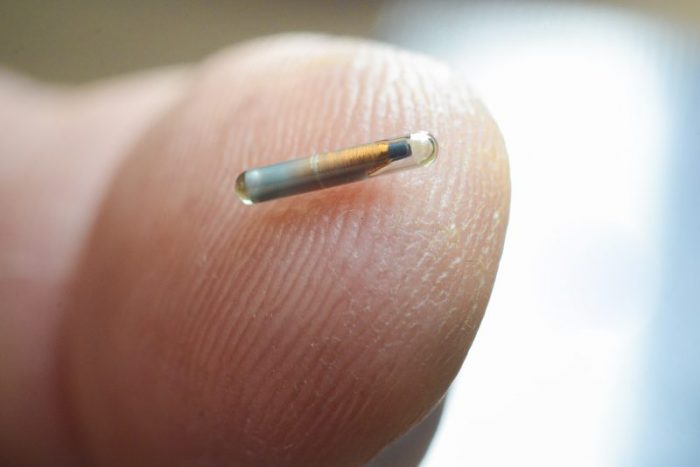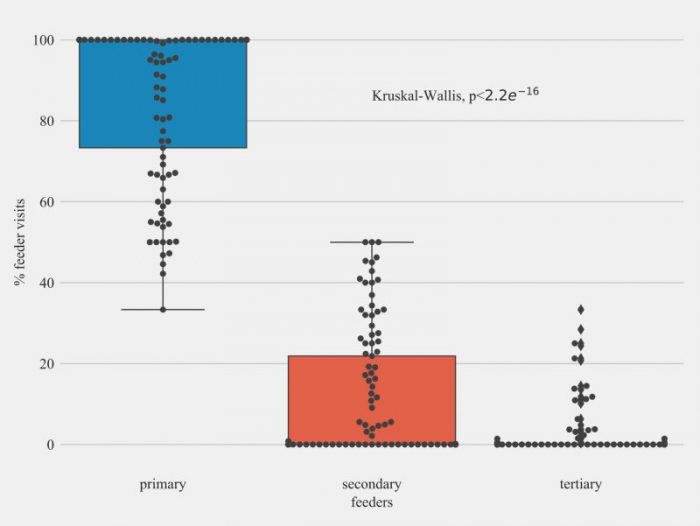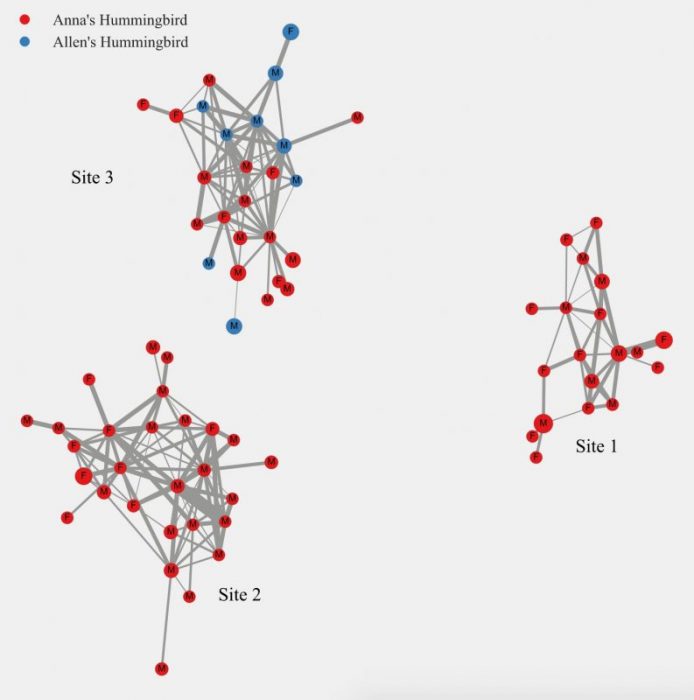
Sighting a single hummingbird feeder filled with birds at each feeding port with other birds hovering in the background waiting for their chance to feed is a normal occurrence in urban habitats with long-term human resource provisioning. However, hummingbirds typically feed in a solitary fashion in free-ranging situations.
For decades, artificial provisioning of sugar water has attracted these charismatic birds to urban habitats, and sustainable food resources have increased their breeding success, resulting in the congregation of large numbers and multiple species. To date, the impacts of urbanization and artificial resource provisioning on hummingbird populations have been minimally studied, however, understanding posed threats to these avian pollinators is critical for protecting sustainable populations.
The investigators of this study were interested in establishing a method for studying disease transmission based on feeding patterns at hummingbird feeders. To that end, a goal was directed at understanding the factors associated with the use of sugar water feeders by hummingbirds. Radiofrequency identification technology was incorporated into seven feeding stations that were deployed at three sites in California, two in northern and one in southern regions of the state. Feeding stations had a feeder encompassed with netted material and a circular antenna that served as the unit entrance while simultaneously reading passive integrated transponder tags of marked birds (Figure 1).

Figure 1. Front view of the feeding station using radiofrequency identification technology. (Illustration by Kathy West Studios)
230 birds (Anna’s and Allen’s Hummingbirds) were subcutaneously implanted with PIT tags. The sites were monitored from September 2016 to March 2018, and 118,017 tag reads were recorded for all seven feeding stations combined. The data were analyzed to look at the temporal demographics of the tagged hummingbirds and their interactions at feeding stations. Approximately 61% tagged birds returned at least once, with some returning the very day of PIT tag placement, while others returned after almost a year post-marking. The RFID equipped feeding station was not only able to quantify PIT tagged hummingbird feeder visits but also the amount of time spent co-mingling at feeder stations.

A small RFID tag that Dr. Lisa Tell implants in hummingbirds for her Hummingbird Health Program at the University of California School of Veterinary Medicine. Photo by Don Preisler
Study findings included trends where males overlapped their feeding time more with other males than females. In addition, each hummingbird had a feeder it visited more often compared to other feeding stations at the same site, and the mean percentage of visits to an individual bird’s primary feeder was approximately 90% (Figure 2). More studies are required to further understand this behavior. Night activity was recorded at one of the three sites where young females (n=2) and a male (n=1) were sporadically active on various nights and throughout the night. These results support previous studies’ conclusions that torpor in hummingbirds is influenced by the availability of resources, and not all hummingbirds utilize torpor routinely.

Figure 2. Feeder visit percentages for individual Anna’s and Allen’s Hummingbirds for primary, secondary, and tertiary feeders at Site 2 in Northern California. Source: Use of RFID technology to characterize feeder visitations and contact network of hummingbirds in urban habitats. Bandivadekar RR, Pandit PS, Sollmann R, Thomas MJ, Logan SM, et al. (2018) Use of RFID technology to characterize feeder visitations and contact network of hummingbirds in urban habitats. PLOS ONE 13(12): e0208057. https://doi.org/10.1371/journal.pone.0208057
Developing a method for elucidating the contact network of hummingbirds (Figure 3) at feeders was a unique aspect of this study compared to previous hummingbird studies. To the authors’ knowledge, no other study has investigated contact network of hummingbirds at feeders before. Our feeder unit was able to record bird to bird interactions on an individual basis as well as the amount of time birds interacted with each other. Analysis of hummingbird contact network showed a difference in the network centrality between sex and age groups. This system could help researchers to further understand population dynamics, phenology, and local movement patterns of hummingbirds in an urbanized environment.

Figure 3. Contact network of tagged Anna’s (pink nodes) and Allen’s hummingbirds (green nodes). Source: Use of RFID technology to characterize feeder visitations and contact network of hummingbirds in urban habitats. Bandivadekar RR, Pandit PS, Sollmann R, Thomas MJ, Logan SM, et al. (2018) Use of RFID technology to characterize feeder visitations and contact network of hummingbirds in urban habitats. PLOS ONE 13(12): e0208057. https://doi.org/10.1371/journal.pone.0208057
These findings are described in the article entitled Use of RFID technology to characterize feeder visitations and contact network of hummingbirds in urban habitats, recently published in the journal PLoS One. This work was conducted by Ruta R. Bandivadekar, Pranav S. Pandit, Rahel Sollmann, Michael J. Thomas, A. Peter Klimley, and Lisa A. Tell from the University of California Davis, Scott M. Logan from Wild Wings Ecology, and Jennifer C. Brown from the United States Fish and Wildlife Service.
This study was made possible due to support from the UC Davis Epicenter for Disease Dynamics, generous donations by The Daniel and Susan Gottlieb Foundation and Glide Foundation, and grant awards from the Zoological Society of San Diego and the UC Davis Interdisciplinary Research Program.









